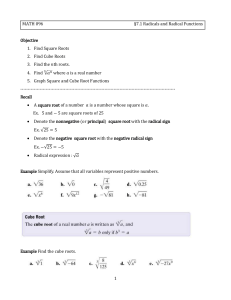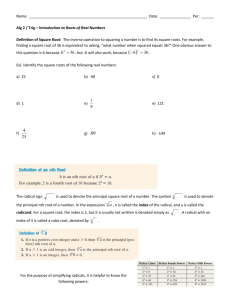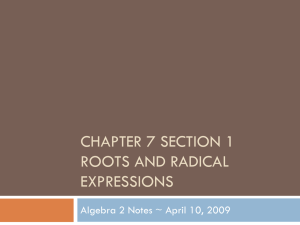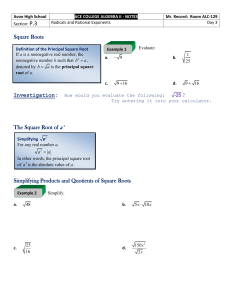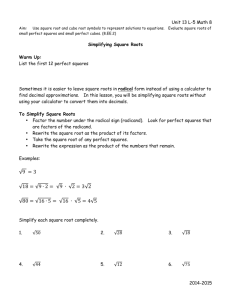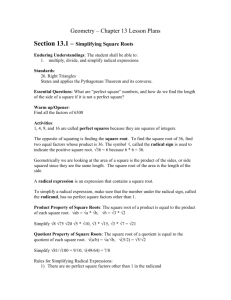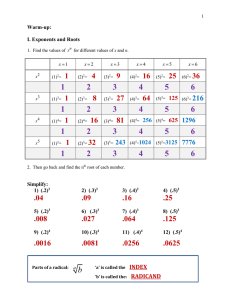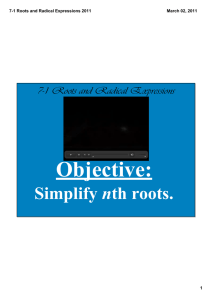7.1 Radical Expressions
advertisement
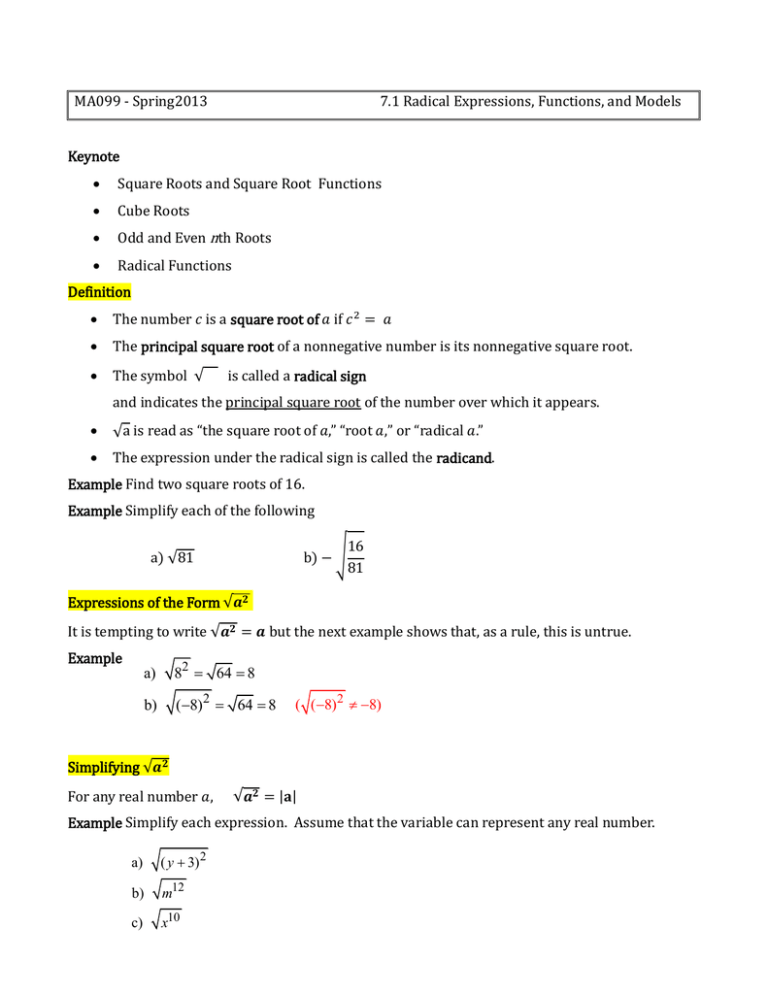
MA099 - Spring2013 7.1 Radical Expressions, Functions, and Models Keynote Square Roots and Square Root Functions Cube Roots Odd and Even nth Roots Radical Functions Definition The number 𝑐 is a square root of 𝑎 if 𝑐 2 = 𝑎 The principal square root of a nonnegative number is its nonnegative square root. The symbol √ is called a radical sign and indicates the principal square root of the number over which it appears. √a is read as “the square root of 𝑎,” “root 𝑎,” or “radical 𝑎.” The expression under the radical sign is called the radicand. Example Find two square roots of 16. Example Simplify each of the following b) − √ a) √81 16 81 Expressions of the Form √𝒂𝟐 It is tempting to write √𝒂𝟐 = 𝒂 but the next example shows that, as a rule, this is untrue. Example a) 82 64 8 b) (8)2 64 8 ( (8)2 8) Simplifying √𝒂𝟐 For any real number 𝑎, √𝒂𝟐 = |𝐚| Example Simplify each expression. Assume that the variable can represent any real number. a) ( y 3) 2 b) m12 c) x10 Definition The number 𝑐 is a cube root of 𝑎 if 𝑐 3 = 𝑎 Example Simplify 3 27 x3 . Odd and Even 𝒏𝒕𝒉 Roots The fourth root of a number 𝒂 is the number 𝑐 for which 𝑐 4 = 𝑎. We write √𝑎 for the 𝒏th root. 𝑛 The number 𝑛 is called the index (plural, indices). When the index is 2, we do not write it. Example Find each of the following a) 5 243 a) 4 81 b) 5 243 b) 4 81 c) 11 11 m c) 4 16m 4 Summary: Simplifying nth Roots Radical Functions A radical function is a function that can be described by a radical expression. Example Find the domain of the function given by the equation. Check by graphing the function. Then, from the graph, estimate the range of the function. 𝑓(𝑥) = √𝑥 − 4
